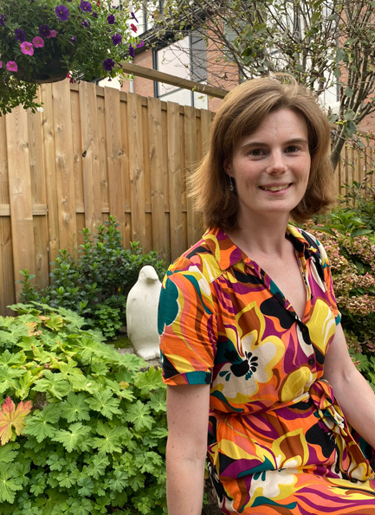Diagnostic imaging and intervention in carotid artery disease
Astrid Hoving is a PhD student in the Department Robotics and Mechatronics. (Co)Promotors are prof.dr.ir. C.H. Slump and dr. J. Mikhal from the Faculty of Electrical Engineering, Mathematics and Computer Science and prof.dr. G.J. de Borst from UMC Utrecht.
 The goal of this thesis is to elaborate on the diagnostics and treatment of carotid artery stenosis and extracranial carotid aneurysm. This is done by improving stenosis degree measurements and developing methods for in vitro blood flow studies to study the effects of stenting.
The goal of this thesis is to elaborate on the diagnostics and treatment of carotid artery stenosis and extracranial carotid aneurysm. This is done by improving stenosis degree measurements and developing methods for in vitro blood flow studies to study the effects of stenting.
The first part of this thesis focuses on the diagnostic part of carotid artery disease, where a large clinical problem of interobserver variability in stenosis degree measurement in calcified arteries is taken into consideration. In chapter 2 we show that our semi-automatic algorithms overcome manual intervention in outlining the vessel border to determine the smallest diameter, which might improve the clinical workflow in determining the stenosis degree and with that, the type of treatment.
The second part of this thesis focuses on the stenting of diseased carotid arteries. Chapter 3 describes an extensive literature review on these topics to create an overview of possibilities and guidance for conducting in vitro flow studies in a carotid artery model.
By designing and fabricating bench-top flow setups and carotid artery models of tissue-mimicking materials, we show the challenges and potential in performing in vitro flow studies.
In Chapter 4, we propose a workflow from design to echoPIV (a novel ultrasound technique) measurements in an extracranial carotid artery aneurysm model, which we compared to fully resolved simulations in the same simplified model.
In Chapter 5, we elaborate on echoPIV measurements in a carotid artery model. The aim is to investigate the performance of echoPIV in a stented model. We concluded that the stent caused a decrease in signal intensities of the contrast agent. However, the quality of the ultrasound measurement is still sufficient to perform PIV analysis in the stented part of the vessel.
We continue studying blood flow conditions in vitro in a carotid artery model in Chapter 6. We aimed to design and fabricate a tissue-mimicking bifurcation model in a setup suitable for echoPIV measurements. Additionally, we planned to validate the setup by exploratory measurements. Validation measurements show a maximum deviation of 3% from the desired pulsatile flow pattern. Stationary flow experiments resulted in a change of flow patterns in the ECA directly downstream of the stent. These exploratory measurements show the difficulties in simulated flow studies, and on the other hand, the potential for using in vitro techniques to understand the effects of stenting on blood flow characteristics.





